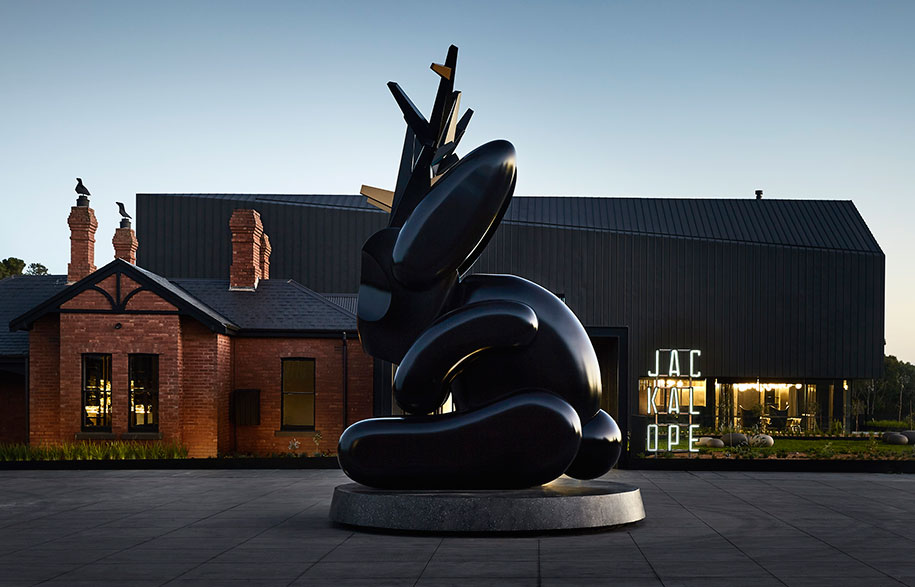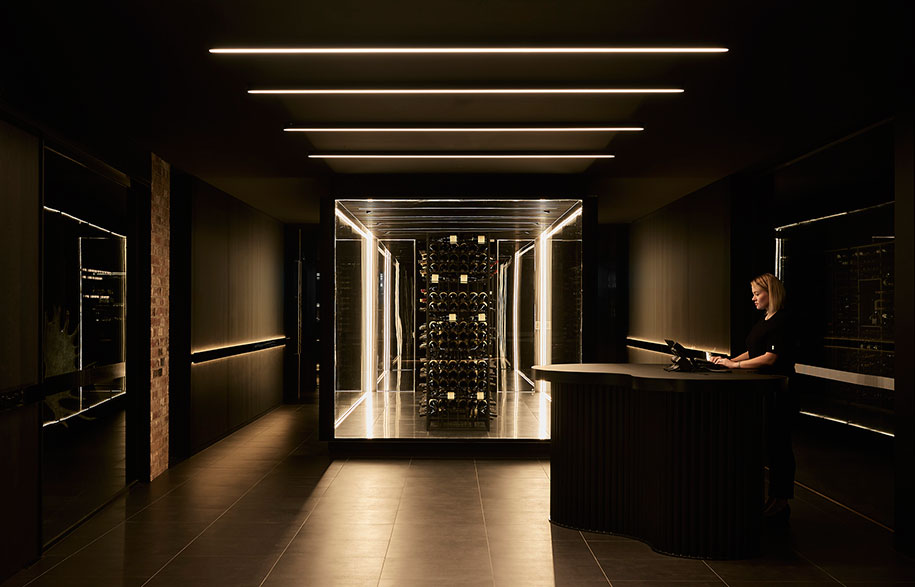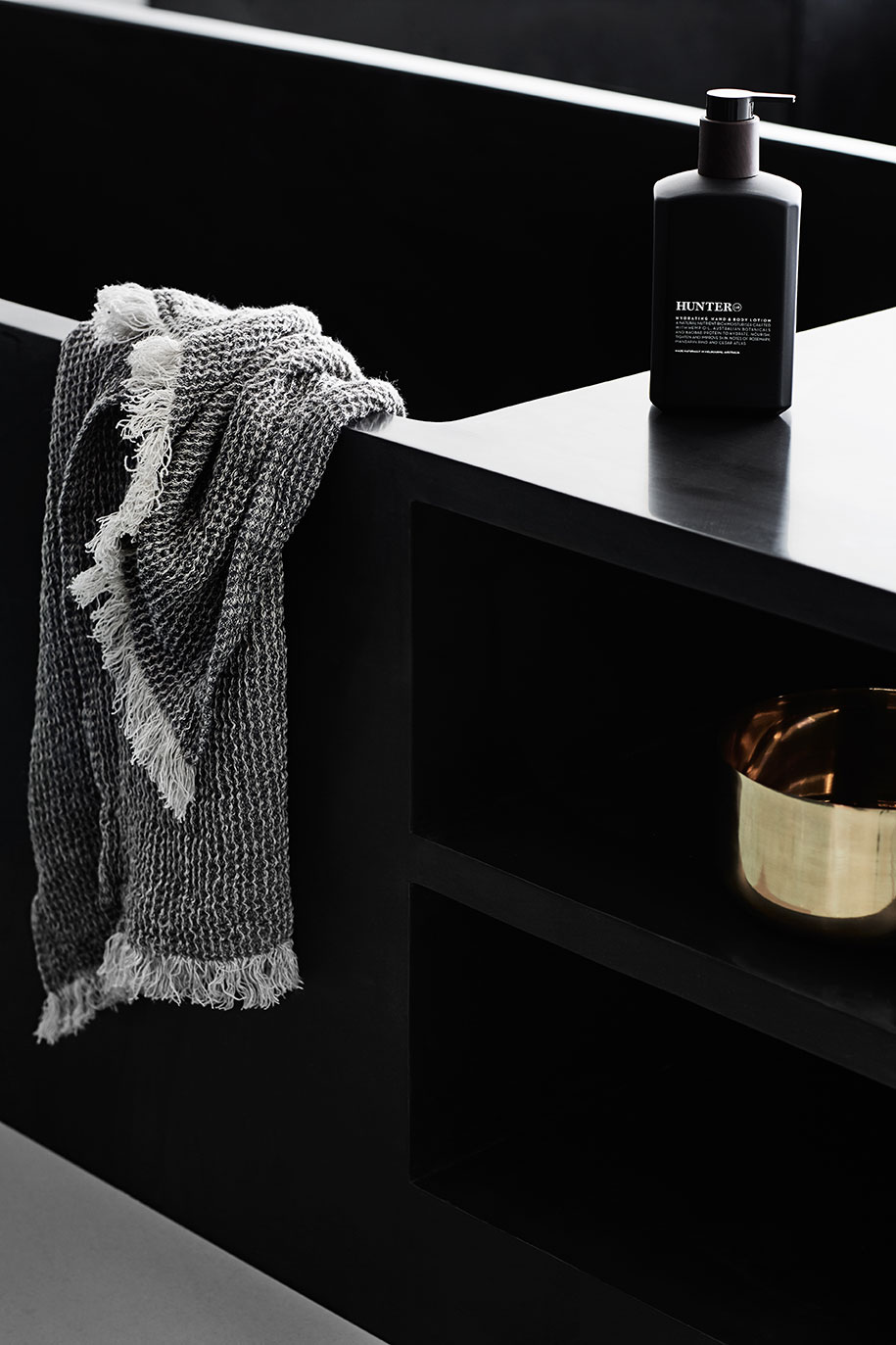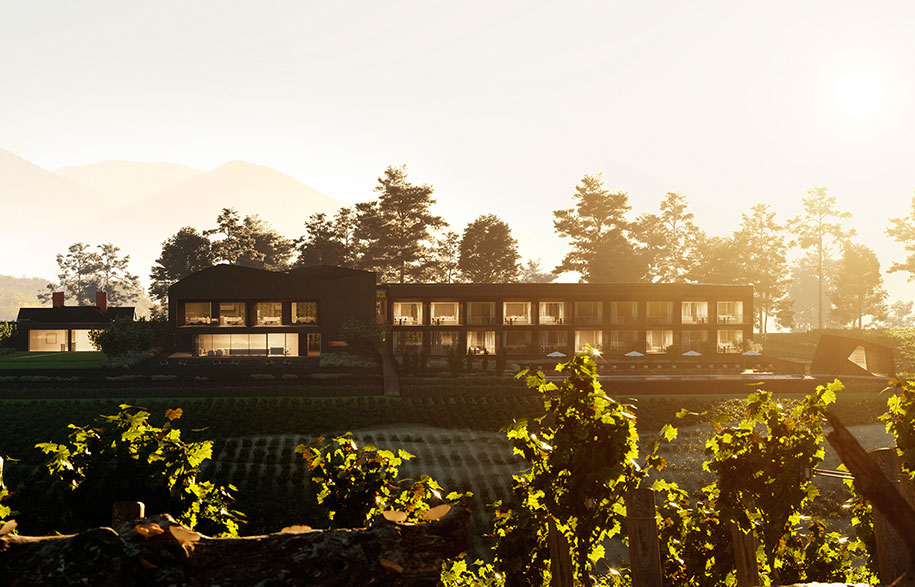The jackalope is a mythical beast, a horny hybrid of jackrabbit and antelope unleashed on unsuspecting Wyoming prairies in the 1930s by a hunter with a gift for taxidermy and curious wit. Its namesake hotel on the Mornington Peninsula is no less exotic, although very much more real. Designed by Melbourne’s Carr Design Group in collaboration with the multi-disciplinary Fabio Ongarato studio, the Jackalope is a slick black box perched atop a valley of tumbling vines. Monolithic, almost brutal, the metal-clad structure resets the template of the boutique hotel experience at the same time as revolutionizing the cellar door.
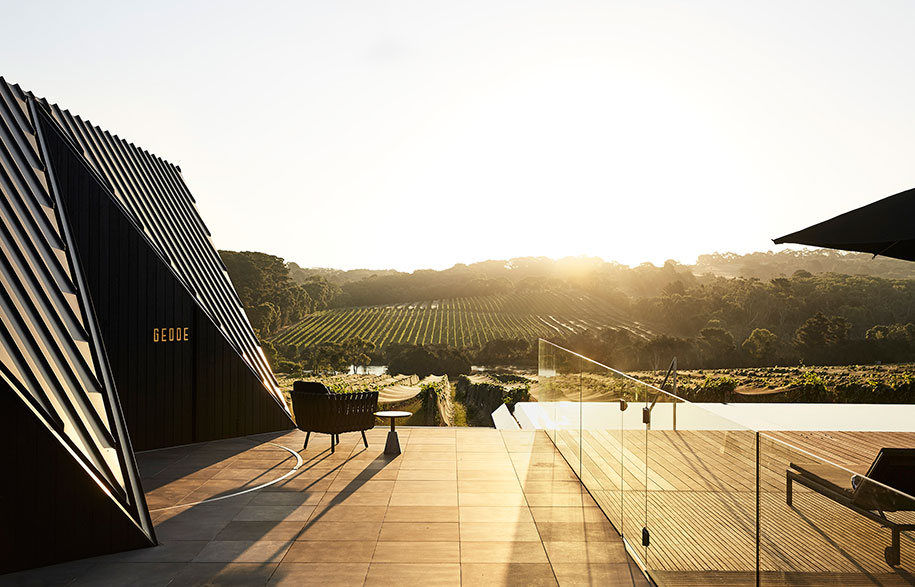
“The client wanted us to encapsulate notions of alchemy and transformation, the essence of wine making,” says Sue Carr. “It’s rare to be pushed so much by a brief, and for a while there we were wiggling about, trying to make sense of a highly abstract concept.” Sue made sense of that abstraction by creating a hermetic space in which the decor could snap, crackle and pop.
In the main dining room, an 8×10 metre chandelier by Melbourne designer Jan Flook is composed of 10,000 exposed filament bulbs that ripple with the electric current, evanescent. In the lobby bar, bright white neon tubing snakes its way across the ceiling, illuminating rows of bubble shaped flasks which riff niftily off the alchemy theme. Furniture includes golden leather pelt ‘Barbarian’ chairs by the Campana brothers for Edra, antler and oak benches by Rick Owens and a scattering of elegantly crafted classics by Melbourne design group, Zester. Plaster busts feature anonymous agate faces, surreal.
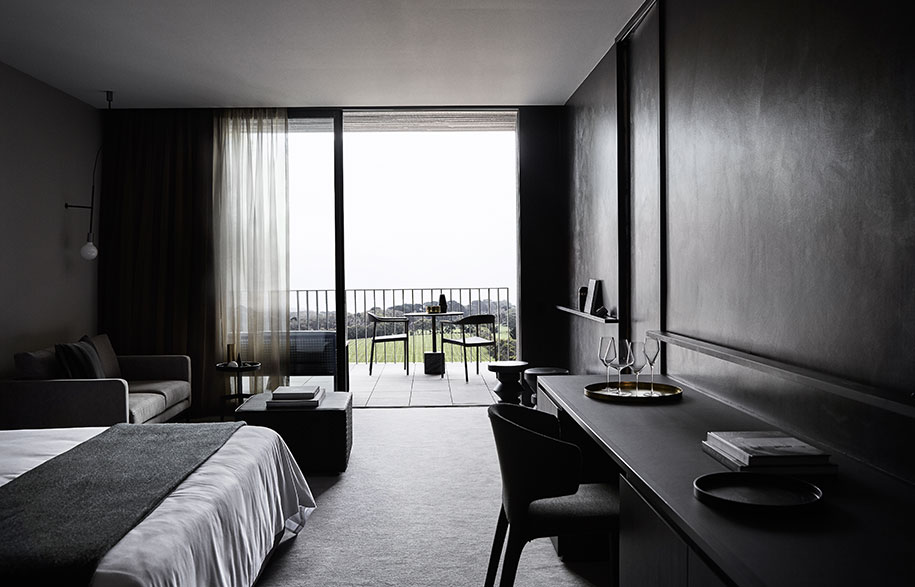

The 46 rooms are conceived as ‘lairs’ and accessed via a dimly lit passageway, creating a sense of anticipation and intrigue. Airy, and open to the vineyards, the charred timber interiors evoke the inside of wine barrels and are equally as intoxicating. “We composed them as a coherent sequence from waxed black resin bath tub to dark timber workspace to sleeping area,” says Sue. Joinery is seamlessly integrated, all fittings are copper, brass or bronze. “We know from experience that if you get the built form right, you don’t have to work too hard after that.” With sweeping views across the 30-metre black infinity pool out across lush grapevines the rooms are incredibly meditative, the mood shifting along with the foliage according to the season. “We wanted to create a sense of indulgence and comfort within a rigorous environment that would reflect our studio’s aesthetic,” says Sue. And it’s in the balance of structure and whimsy, of rationale and emotion, that the strength of the Jackalope experience resides.
Jackalope
jackalopehotels.com
